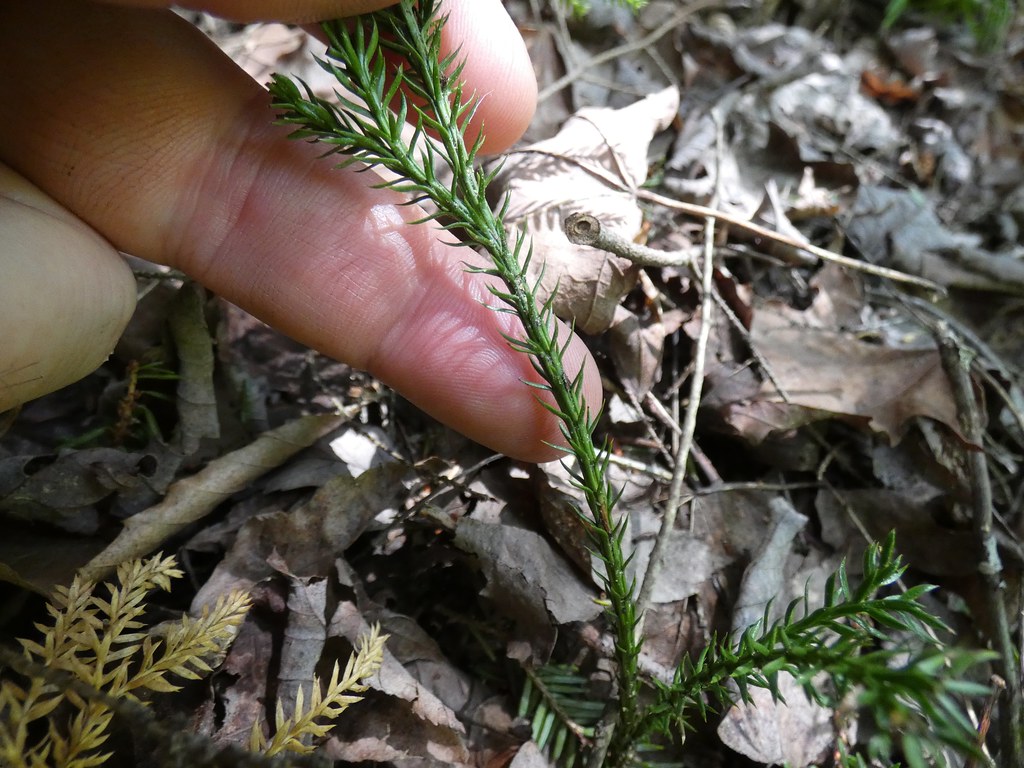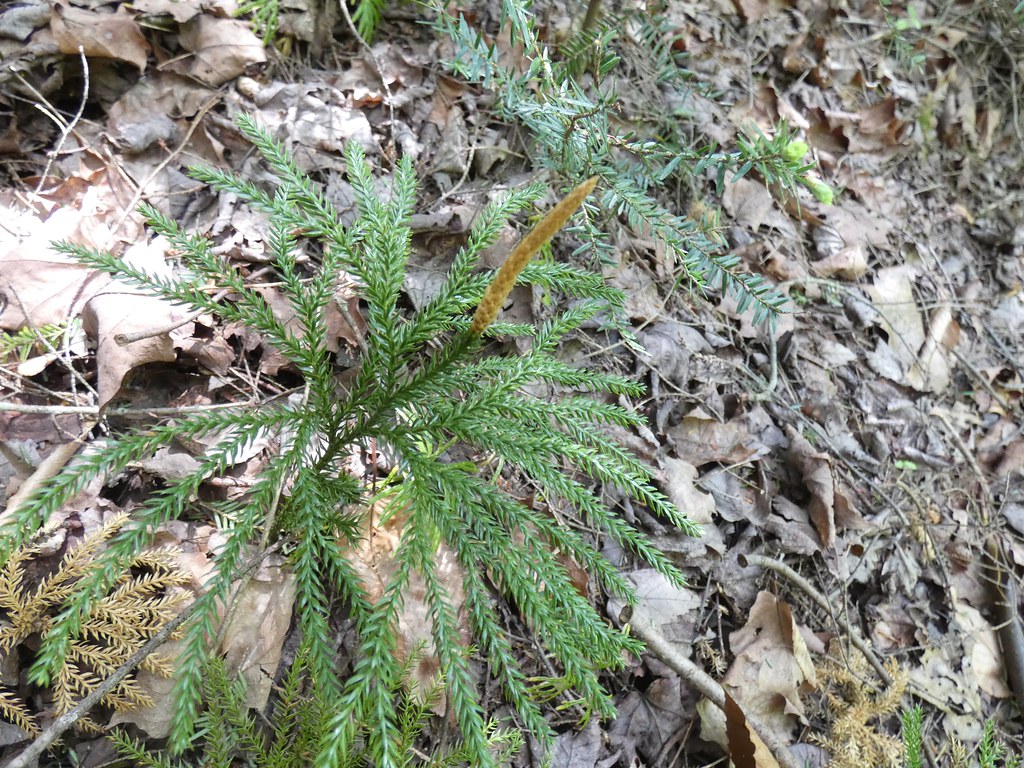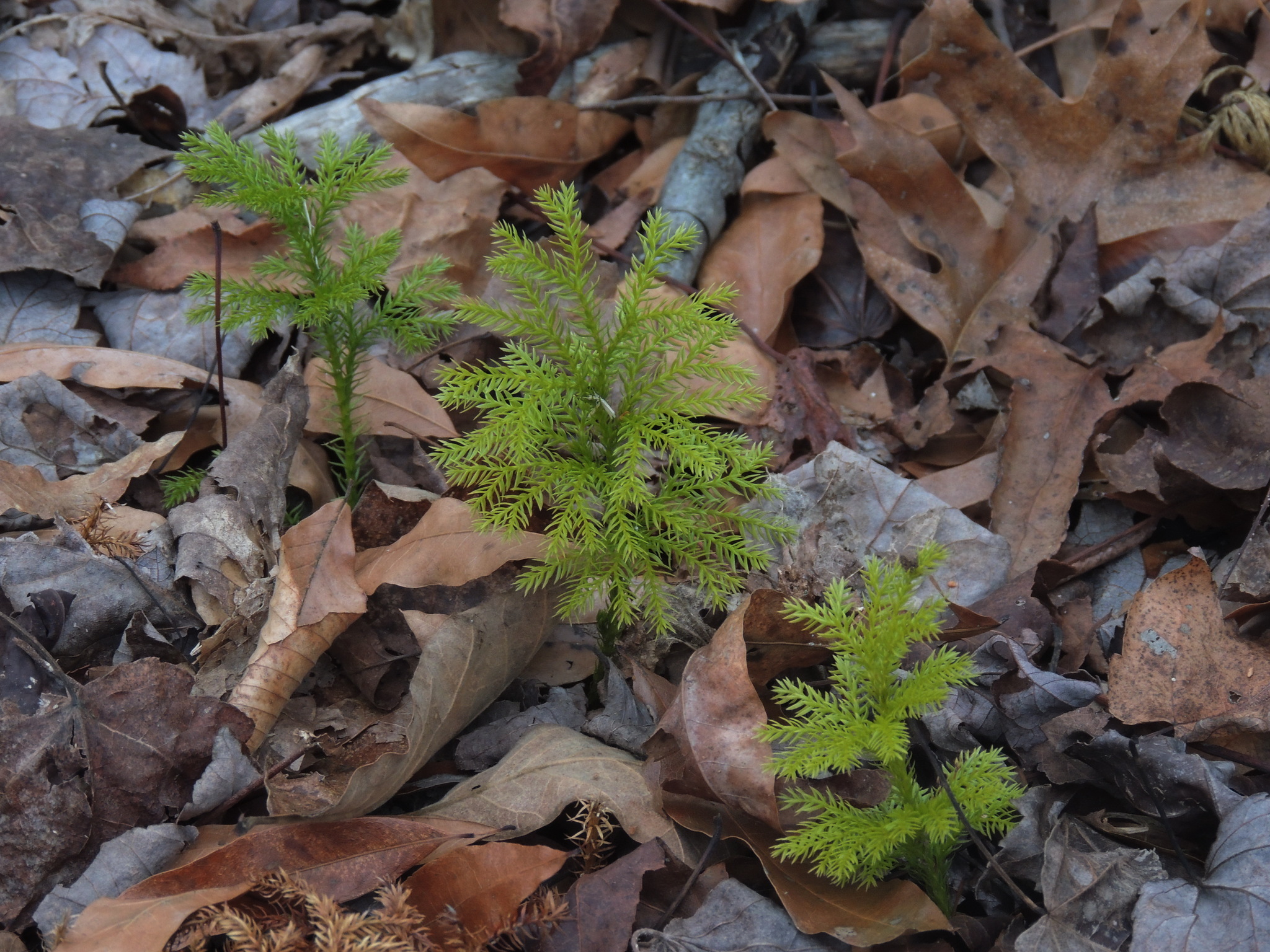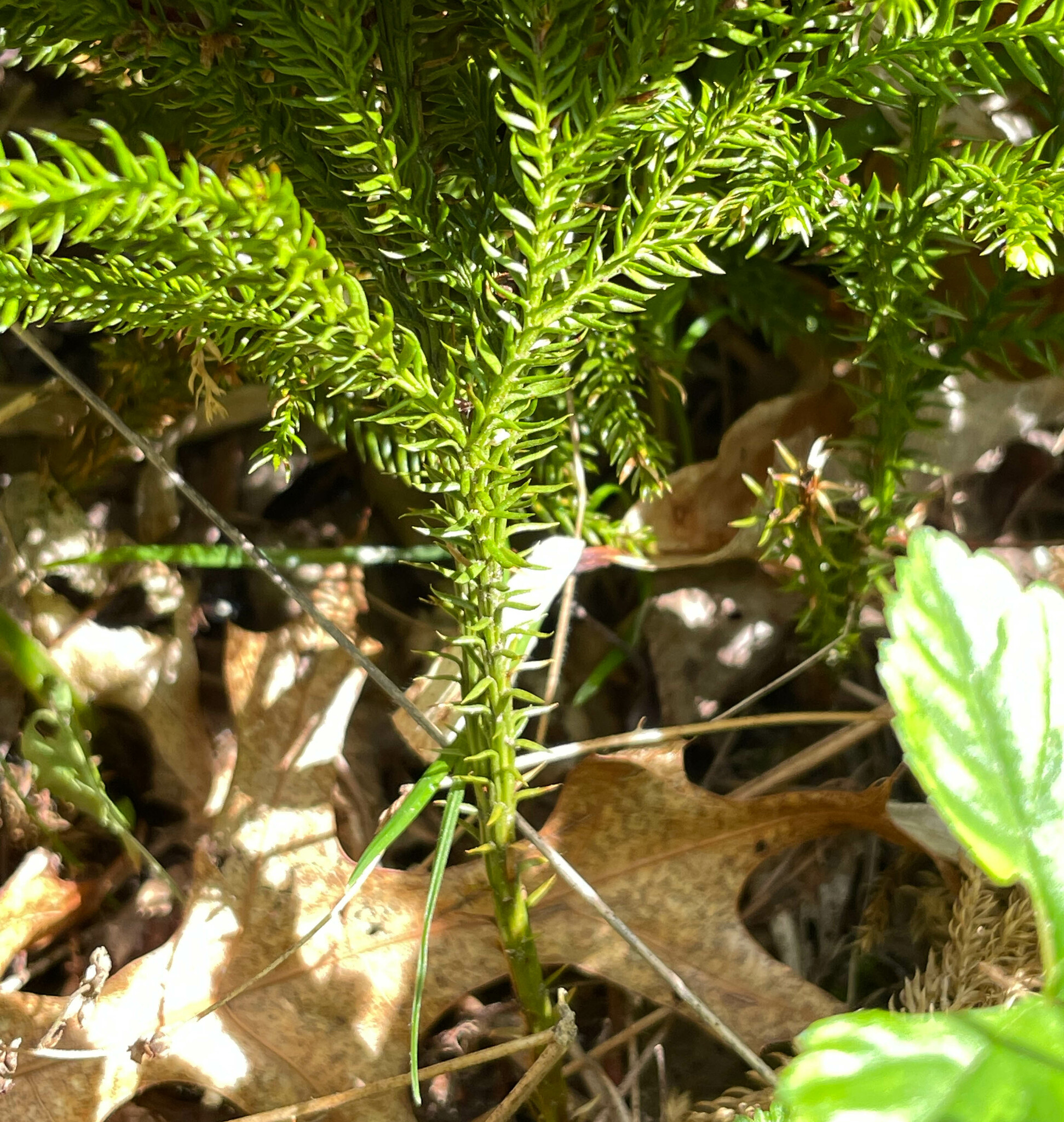Map Snapshot







20 Records
Seasonality Snapshot
Source: Wikipedia
| Dendrolycopodium dendroideum | |
|---|---|

| |
| Scientific classification | |
| Kingdom: | Plantae |
| Clade: | Tracheophytes |
| Clade: | Lycophytes |
| Class: | Lycopodiopsida |
| Order: | Lycopodiales |
| Family: | Lycopodiaceae |
| Genus: | Dendrolycopodium |
| Species: | D. dendroideum
|
| Binomial name | |
| Dendrolycopodium dendroideum (Michx.) A. Haines
| |

| |
| Synonyms | |
| |
Dendrolycopodium dendroideum, synonym Lycopodium dendroideum, known as tree groundpine,[1] is a North American species of clubmoss. It is part of a complex of species colloquially known as groundpine, which taxa were formerly lumped into the species Lycopodium obscurum.[2][3] The species is native to Russia and also to the colder parts of North America (all states and provinces in Canada except Nunavut; northern and east-central United States including Alaska).[4] The genus Dendrolycopodium is accepted in the Pteridophyte Phylogeny Group classification of 2016 (PPG I),[5] but not in other classifications, which submerge the genus in Lycopodium.[6]
Dendrolycopodium dendroideum prefers humus-rich, sandy, moist but not completely saturated soils. It is very similar to D. obscurum except for side shoots that are round in cross-section rather than flat, and having leaves all the same size.[7]
Uses
[edit]Historically, this and other related clubmosses had been collected for decorative Christmas greenery. Overharvesting clubmosses destroys the slow growing, increasingly rare plant.[citation needed] The spore of this species was also collected as Lycopodium powder for use in early photography, although this was not the preferred species for the purpose.[citation needed]
References
[edit]- ^ NRCS. "Lycopodium dendroideum". PLANTS Database. United States Department of Agriculture (USDA). Retrieved 24 June 2015.
- ^ Haines, Arthur. 2003. Families Huperziaceae and Lycopodiaceae of New England 84.
- ^ Hickey, R. J. 1977. The Lycopodium obscurum complex in North America. American Fern Journal 67: 45--49.
- ^ Biota of North America Program 2014 state-level distribution map
- ^ PPG I (2016). "A community-derived classification for extant lycophytes and ferns". Journal of Systematics and Evolution. 54 (6): 563–603. doi:10.1111/jse.12229. S2CID 39980610.
- ^ Christenhusz, Maarten J.M. & Chase, Mark W. (2014). "Trends and concepts in fern classification". Annals of Botany. 113 (9): 571–594. doi:10.1093/aob/mct299. PMC 3936591. PMID 24532607.
- ^ Flora of North America, Lycopodium dendroideum Michaux, Fl. Bor.-Amer. 2: 282. 1803. Prickly tree club-moss, lycopode dendroïde




